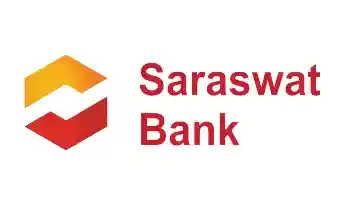Get instant loan offer suitable to your profile !


On this Page:
Discover how IELTS scores are calculated with our comprehensive guide. Learn about overall and sectional band scores, performance descriptors, and exam tips to boost your IELTS prep.
The International English Language Testing System (IELTS) is an English language proficiency test for individuals planning to study, work, or migrate to English-speaking countries. Institutions in the UK, USA, Canada, Australia, and New Zealand use IELTS scores to evaluate an individual's capability to understand and communicate in English.
Thus, if you are going to appear for the IELTS exam, understanding the IELTS scoring system is crucial. This helps you prepare for the test and will set realistic targets. In this guide, we will walk you through the IELTS score calculation, breaking down the overall and sectional IELTS band scores calculation.

Before moving on to the score calculation process, let us first understand the types of IELTS scores. There are two types of IELTS scores:


For each of the four sections of the exam, students are given a band score (sectional band score) ranging from 0 to 9 in half-point intervals (9 being the highest score possible). Test-takers are also provided a total or an overall band score of 0 to 9, which is calculated by adding together the four section scores, dividing the total by four, and then rounding it up or down to the closest half-point. For instance, 6.5, 5.5, 6.0, and 6.5 sectional band scores add up to 24.5. The overall score is then arrived at by dividing this total by four, which comes out to be 6.125, generating a complete 6.0 band score.
Before learning about the calculation of the IELTS scores, it’s important to understand the two types of scores:


Each section is graded on a band scale from 0 to 9, including half-point intervals. The IELTS overall band score is the average of these four section scores, rounded to the nearest whole or half band.
Let’s understand this using an example:
| Section | Score |
|---|---|
|
Listening |
6.5 |
|
Reading |
6.5 |
|
Writing |
5.0 |
|
Speaking |
7.0 |
|
Total |
25 |
So, your total score of the IELTS exam is 25, but the IELTS score is gonna be:
25 ÷ 4 = 6.25, rounded up to an IELTS overall band score of 6.5. However, this round-off doesn’t always work in the same way. Here’s how the round-off works:
| Average Score | Rounded IELTS Band |
|---|---|
|
6.25 |
6.5 |
|
6.75 |
7.0 |
|
6.1 |
6.0 |
So, how do these rounding rules work? Below is the answer to this question.



Read more: How to Calculate SGPA: Calculations Simplified

The IELTS band scores are calculated individually and involve multiple levels. The score for each level is called the sectional band score. For each segment, you can get a score between 1 and 9.
These two sections include 40 questions and earn 1 mark per correct answer, and there are no penalties for incorrect ones. The raw scores are converted to band scores using the scale below.
| Correct Answers | Band Score |
|---|---|
|
39-40 |
9 |
|
37-38 |
8.5 |
|
35-36 |
8 |
|
32-34 |
7.5 |
|
30-31 |
7 |
|
26-29 |
6.5 |
|
23-25 |
6 |
|
18-22 |
5.5 |
|
16-17 |
5 |
|
13-15 |
4.5 |
|
10-12 |
4 |
|
8-9 |
3.5 |
|
6-7 |
3 |
|
4-5 |
2.5 |
Your IELTS Writing score is evaluated by performance in Task 1 and Task 2.




Each criterion is rated on a scale of 0 to 9. Task 2 carries double the weight of Task 1. The average of the weighted scores becomes your final band. For the band score descriptors of IELTS Writing, click here.
The speaking test is also marked out of 9 according to the following criteria:




This section also has performance descriptors for band scores, which IELTS candidates can check here to understand the factors they will be judged on in the speaking test.


For each Band Score obtained, IELTS defines the individual's level of proficiency in English. This also spots their strong and weak areas in the language. The Band Score Descriptions, followed by IELTS, are given in the table below.
| IELTS Score | Impression | Interpretation |
|---|---|---|
|
Band 9 |
Expert User |
You have the language's full operational command. Your use of English is adequate, accurate, and fluent, and you are fully aware of it. |
|
Band 8 |
Very Good User |
You have a language command that is fully operational with only occasional unsystematic inaccuracies and inappropriate use. In unfamiliar situations, you may misunderstand certain things. Complex, detailed argumentation is handled well. |
|
Band 7 |
Good User |
You have a language operational command, but in some situations, there is inappropriate use and misunderstandings with occasional inaccuracies. Generally speaking, you handle complex language well and understand the reasoning in detail. |
|
Band 6 |
Competent User |
In general, despite some inaccuracies, inappropriate use, and misunderstandings, you have an effective command of the language. You can use and understand language that is quite complex, especially in familiar situations. |
|
Band 5 |
Modest User |
You have a partial command of the language, and in most situations, you cope with the overall meaning, although you are likely to make a lot of mistakes. In your own field, you should be able to manage basic communication. |
|
Band 4 |
Limited User |
Your basic skills are limited to familiar situations. In understanding and expression, you often show problems. You can't use complex language. |
|
Band 3 |
Extremely Limited User |
In very familiar situations, you convey and understand only the general meaning. Communication breakdowns are frequent. |
|
Band 2 |
Intermittent User |
You have a lot of trouble understanding English, spoken and written. |
|
Band 1 |
Non User |
Except for a few isolated words, you cannot use the language. |
|
Band 0 |
Did Not Attempt The Test |
You did not answer the questions. |

Each individual takes the IELTS exam for a specific goal, whether it's to pursue higher education or secure employment in an English-speaking country. The table below can provide a reference to help you understand the IELTS band score requirements based on your purpose.
| Purpose | % Getting Band 7+ |
|---|---|
|
For Employment |
20% |
|
Higher Education (3+ months) |
42% |
|
Higher Education (≤ 3 months) |
52% |
|
Immigration |
26% |
|
Personal Reasons |
42% |
|
Professional Registration |
14% |
|
Registration as a Doctor |
7% |
|
Registration as a Nurse |
10% |

The aforementioned was a detailed insight into the IELTS scoring. After glancing over the above tables, you know that an IELTS band score of 7 is acceptable by many universities; however, it is difficult to score in both overall and sectional band scores. But practice makes a man perfect; therefore, with hard work and practice, one could easily obtain a decent score on the test. Keeping this scoring method in mind, you should now start preparing for the test on a swing. And if you are in the dark as to how to go about IELTS preparation, you can check out our intensive IELTS section-wise preparation guide here.

The overall IELTS score is calculated by averaging all four section scores.
The IELTS score calculation for the reading and listening sections, the scores depends on the correct answers. However, for the speaking and writing sections, it depends on the invigilator and your performance.
A score of 30 out of 40 in IELTS Listening converts to Band 7.
Yes, a score of 6.75 is rounded up to Band 7.
Check Your Education Loan Eligibility

Ask from a community of 10K+ peers, alumni and experts
Trending Blogs
Similar Blogs

Network with a community of curious students, just like you
Join our community to make connections, find answers and future roommates.. Join our CommunityCountry-Wise Loans
Best Lenders for Education Loan

ICICI Bank

Axis Bank

Union Bank

Prodigy

Auxilo

Credila

IDFC

InCred

MPower

Avanse

SBI

BOB

Poonawalla

Saraswat